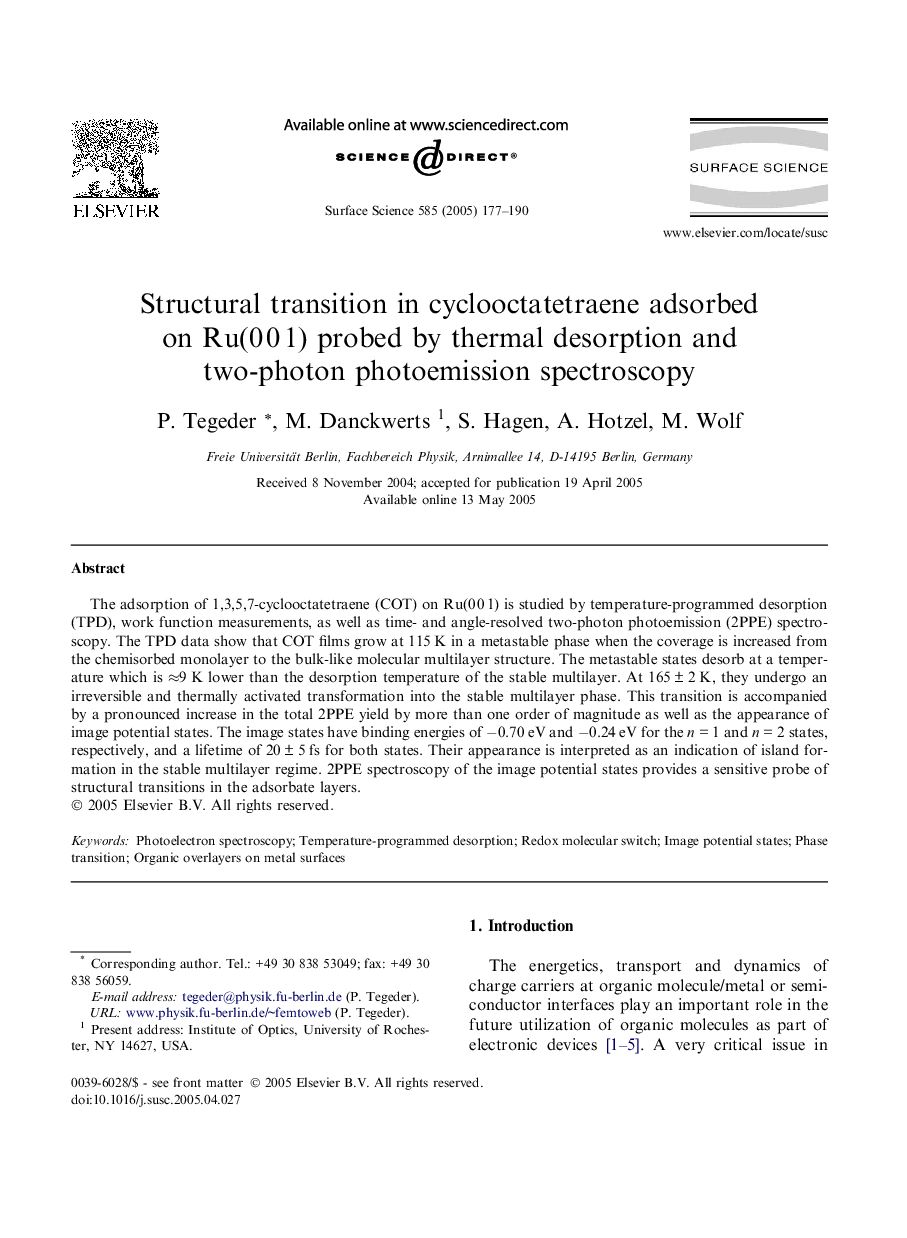| Article ID | Journal | Published Year | Pages | File Type |
|---|---|---|---|---|
| 9594687 | Surface Science | 2005 | 14 Pages |
Abstract
The adsorption of 1,3,5,7-cyclooctatetraene (COT) on Ru(0 0 1) is studied by temperature-programmed desorption (TPD), work function measurements, as well as time- and angle-resolved two-photon photoemission (2PPE) spectroscopy. The TPD data show that COT films grow at 115 K in a metastable phase when the coverage is increased from the chemisorbed monolayer to the bulk-like molecular multilayer structure. The metastable states desorb at a temperature which is â9 K lower than the desorption temperature of the stable multilayer. At 165 ± 2 K, they undergo an irreversible and thermally activated transformation into the stable multilayer phase. This transition is accompanied by a pronounced increase in the total 2PPE yield by more than one order of magnitude as well as the appearance of image potential states. The image states have binding energies of â0.70 eV and â0.24 eV for the n = 1 and n = 2 states, respectively, and a lifetime of 20 ± 5 fs for both states. Their appearance is interpreted as an indication of island formation in the stable multilayer regime. 2PPE spectroscopy of the image potential states provides a sensitive probe of structural transitions in the adsorbate layers.
Keywords
Related Topics
Physical Sciences and Engineering
Chemistry
Physical and Theoretical Chemistry
Authors
P. Tegeder, M. Danckwerts, S. Hagen, A. Hotzel, M. Wolf,
